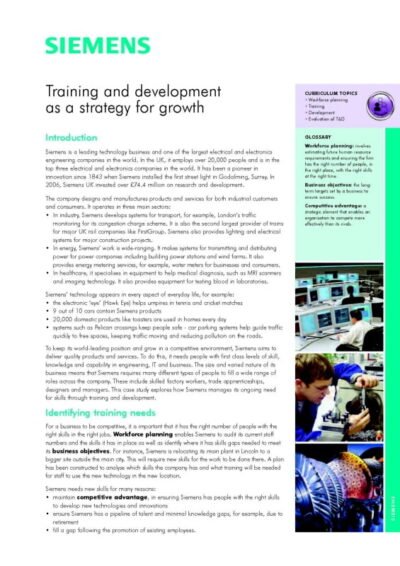Public sector economics is the study of how the government allocates resources and provides goods and services to the public. It encompasses a wide range of activities, including budgeting, taxation, public expenditure, and the impact of government policies on the economy. The public sector plays a crucial role in ensuring the well-being of citizens and promoting economic growth and development.
It is responsible for providing essential services such as healthcare, education, infrastructure, and social welfare programmes. Public sector economics also examines the role of government in regulating markets, addressing market failures, and promoting social equity. The public sector is funded through taxation and other sources of revenue, and it is subject to budget constraints and resource limitations.
Public sector economics seeks to understand how the government can effectively allocate resources to achieve its policy objectives whilst ensuring fiscal sustainability. It also explores the impact of government policies on economic efficiency, equity, and overall welfare. Public sector economics is a complex and dynamic field that requires a deep understanding of economic principles, public finance, and the functioning of government institutions.
As such, it is an important area of study for policymakers, economists, and anyone interested in understanding the role of government in the economy.
Summary
- Public sector economics involves the study of how the government allocates resources to provide public goods and services
- Budgeting is crucial in the public sector to ensure that resources are allocated efficiently and effectively
- Strategies for improving efficiency in the public sector include streamlining processes, reducing waste, and implementing performance-based budgeting
- Technology plays a key role in improving efficiency in the public sector through automation, data analysis, and digital service delivery
- Challenges in public sector economics include budget constraints, political pressures, and the need to adapt to changing demographics, while opportunities lie in innovation, collaboration, and improved service delivery.
The Importance of Budgeting in the Public Sector
Budgeting is a critical aspect of public sector economics as it determines how government resources are allocated and spent. A well-designed budget is essential for ensuring that public funds are used efficiently and effectively to meet the needs of the population. Budgeting in the public sector involves the process of planning, allocating, and controlling government expenditure to achieve policy objectives and promote economic stability.
It requires careful consideration of competing priorities, trade-offs between different programs, and the impact of fiscal policies on the economy. Effective budgeting in the public sector requires transparency, accountability, and good governance to ensure that public funds are used responsibly and in the best interest of the public. It also involves engaging with stakeholders, including citizens, civil society organizations, and other government agencies, to gather input and feedback on budget priorities.
Moreover, budgeting in the public sector involves forecasting revenue, managing expenditure, and monitoring performance to ensure that resources are used efficiently and that public services are delivered effectively. Overall, budgeting is a fundamental tool for promoting fiscal discipline, achieving policy goals, and enhancing the overall performance of the public sector.
Strategies for Improving Efficiency in the Public Sector

Improving efficiency in the public sector is essential for delivering high-quality services, promoting economic growth, and ensuring value for money in government expenditure. There are several strategies that can be employed to enhance efficiency in the public sector. One approach is to streamline administrative processes and reduce bureaucratic red tape to make government operations more agile and responsive.
This can involve simplifying procedures, digitizing paperwork, and adopting best practices from the private sector to improve productivity and reduce waste. Another strategy for improving efficiency in the public sector is to invest in human capital development and training to enhance the skills and capabilities of government employees. This can help to improve service delivery, promote innovation, and build a culture of continuous improvement within government agencies.
Additionally, leveraging data and evidence-based decision-making can help to identify areas for improvement, measure performance, and make informed policy choices. By using data analytics and performance metrics, governments can identify inefficiencies, allocate resources more effectively, and monitor progress towards policy objectives. Furthermore, fostering a culture of accountability and transparency is crucial for improving efficiency in the public sector.
This involves establishing clear performance targets, monitoring outcomes, and holding public officials accountable for their actions. It also requires engaging with citizens and stakeholders to gather feedback, address grievances, and ensure that public services are responsive to the needs of the population. Overall, improving efficiency in the public sector requires a combination of organisational reforms, investment in human capital, data-driven decision-making, and a commitment to accountability and transparency.
The Role of Technology in Public Sector Efficiency
Technology plays a crucial role in improving efficiency in the public sector by enabling governments to modernise their operations, enhance service delivery, and make better use of resources. The adoption of digital technologies can help to streamline administrative processes, reduce paperwork, and automate routine tasks, freeing up time for government employees to focus on more value-added activities. For example, digital platforms can be used to process applications for government services, track performance metrics, and facilitate communication between government agencies and citizens.
Moreover, technology can enable governments to collect and analyse data more effectively to inform decision-making and improve policy outcomes. By leveraging big data analytics, governments can identify trends, measure performance, and make evidence-based policy choices. This can help to identify areas for improvement, allocate resources more efficiently, and monitor progress towards policy objectives.
Additionally, technology can enhance transparency and accountability by providing citizens with access to information about government activities, budgets, and performance metrics. Furthermore, technology can facilitate collaboration and knowledge sharing within government agencies and across different levels of government. By using digital platforms for communication and collaboration, governments can break down silos, share best practices, and coordinate efforts more effectively.
Overall, technology has the potential to transform the public sector by making government operations more efficient, transparent, and responsive to the needs of the population.
Challenges and Opportunities in Public Sector Economics
Public sector economics faces several challenges that can impact the efficiency and effectiveness of government operations. One challenge is fiscal sustainability, as governments must balance competing priorities while ensuring that public finances remain sustainable in the long run. This requires careful management of public debt, revenue generation, and expenditure control to avoid fiscal crises and maintain macroeconomic stability.
Another challenge is addressing market failures and promoting social equity through government intervention while avoiding unintended consequences such as inefficiency or distortionary effects on the economy. Moreover, public sector economics must grapple with issues such as corruption, bureaucratic inefficiency, and lack of transparency that can undermine the effectiveness of government policies and programs. These challenges require strong governance mechanisms, institutional reforms, and a commitment to accountability to ensure that public funds are used responsibly and that public services are delivered effectively.
Additionally, rapid technological advancements present both opportunities and challenges for the public sector as governments seek to harness digital technologies to improve service delivery while addressing issues such as data privacy, cybersecurity, and digital divide. Despite these challenges, there are also opportunities for innovation and improvement in public sector economics. For example, advances in data analytics and artificial intelligence can help governments make better use of data to inform decision-making and improve policy outcomes.
Moreover, there is growing recognition of the importance of citizen engagement and participatory governance in shaping public policies and holding governments accountable for their actions. Overall, addressing these challenges while seizing opportunities for innovation can help to enhance the efficiency and effectiveness of the public sector.
Case Studies of Successful Public Sector Budgeting and Efficiency

Several countries have implemented successful strategies for improving budgeting and efficiency in the public sector. For example, New Zealand introduced a system of performance-based budgeting known as “Managing for Outcomes” which focused on achieving specific policy outcomes rather than just allocating funds to government agencies. This approach helped to improve accountability, transparency, and performance measurement within the public sector while promoting a results-oriented culture.
Another example is Singapore’s use of technology to enhance efficiency in the public sector. The Singaporean government has invested heavily in digital infrastructure and e-government services to streamline administrative processes, improve service delivery, and engage with citizens more effectively. This has helped to make government operations more efficient while enhancing transparency and accountability.
Furthermore, Estonia has been a pioneer in digital governance by implementing a range of e-government services that have transformed how citizens interact with the government. From e-voting to e-residency programs, Estonia has leveraged technology to make government operations more efficient while promoting citizen engagement and participation in policymaking. These case studies demonstrate that there are various approaches that governments can take to improve budgeting and efficiency in the public sector.
By embracing innovation, leveraging technology, promoting accountability, and focusing on results-oriented budgeting, governments can enhance their ability to deliver high-quality services while ensuring value for money in public expenditure.
Conclusion and Future Outlook for Public Sector Economics
In conclusion, public sector economics plays a crucial role in shaping how governments allocate resources, provide services to citizens, and promote economic development. Budgeting is a fundamental tool for ensuring that public funds are used efficiently while promoting fiscal sustainability. Improving efficiency in the public sector requires a combination of organisational reforms, investment in human capital development, data-driven decision-making, accountability mechanisms, and leveraging technology.
Looking ahead, there are several opportunities for innovation in public sector economics as governments seek to harness digital technologies to improve service delivery while addressing challenges such as fiscal sustainability and social equity. By embracing innovation, promoting transparency and accountability, engaging with citizens more effectively, and making better use of data analytics technologies governments can enhance their ability to deliver high-quality services while ensuring value for money in public expenditure. Overall, public sector economics will continue to be an important area of study as governments seek to address complex economic challenges while promoting inclusive growth and sustainable development.
By understanding the role of government in the economy through the lens of public sector economics policymakers can make informed decisions that promote economic stability while ensuring that public funds are used responsibly for the benefit of all citizens.
If you are interested in public sector economics and efficiency, you may also find the article on business process outsourcing best practices to be relevant. This article discusses how organisations can improve their efficiency and effectiveness by outsourcing certain business processes. It provides insights into the benefits and challenges of outsourcing, which can be valuable for public sector organisations looking to improve their budgeting and operational efficiency.
FAQs
What is public sector economics?
Public sector economics is the study of how the government allocates its resources to provide public goods and services, and how it affects the overall economy.
What is budgeting in public sector economics?
Budgeting in public sector economics refers to the process of allocating and managing the government’s financial resources to meet its objectives and provide public services.
What is efficiency in public sector economics?
Efficiency in public sector economics refers to the ability of the government to allocate its resources in a way that maximizes the benefits to society, while minimizing waste and inefficiency.
How does public sector economics impact the overall economy?
Public sector economics can impact the overall economy through its influence on government spending, taxation, and regulation, which can affect economic growth, inflation, and income distribution.
What are some key principles of public sector economics?
Key principles of public sector economics include the provision of public goods, the role of government in correcting market failures, and the trade-offs between equity and efficiency in resource allocation.
 Training and development as a strategy for growth (PDF)
Training and development as a strategy for growth (PDF)  Using a range of management styles to lead a business (MP3)
Using a range of management styles to lead a business (MP3)  CMI A3 ePoster Edition 17 "Managing change"
CMI A3 ePoster Edition 17 "Managing change"  Meeting and exceeding consumer protection laws to drive competitive advantage (PDF)
Meeting and exceeding consumer protection laws to drive competitive advantage (PDF) 